As part of the Kings, Saints, Monasteries research program supported by the Eötvös Loránd Research Network (ELKH), archaeological excavations were carried out with the leadership of the ELKH Research Centre for the Humanities (RCH) between April and May 2023 at the site located in the northern courtyard of the Pannonhalma Archabbey. Based on the scattered bones found at the site, it can be concluded that there was indeed a populous cemetery located here.
The research conducted in a heavily disturbed area revealed that the architectural history of the monastery still holds many unknown details for the experts and the active Benedictine community. Exploring these will further refine the history of the country's oldest functioning abbey.
As part of the Kings, Saints, Monasteries multidisciplinary research program, archaeological research continued in Pannonhalma in 2023 following the excavations in the Royal Crypt of Tihany in 2021 and the courtyard of the Benedictine monastery in Bakonybél in 2022. The research of early royal-founded monasteries is carried out with the support of the Eötvös Loránd Research Network and coordinated by the ELKH Research Centre for the Humanities (RCH).
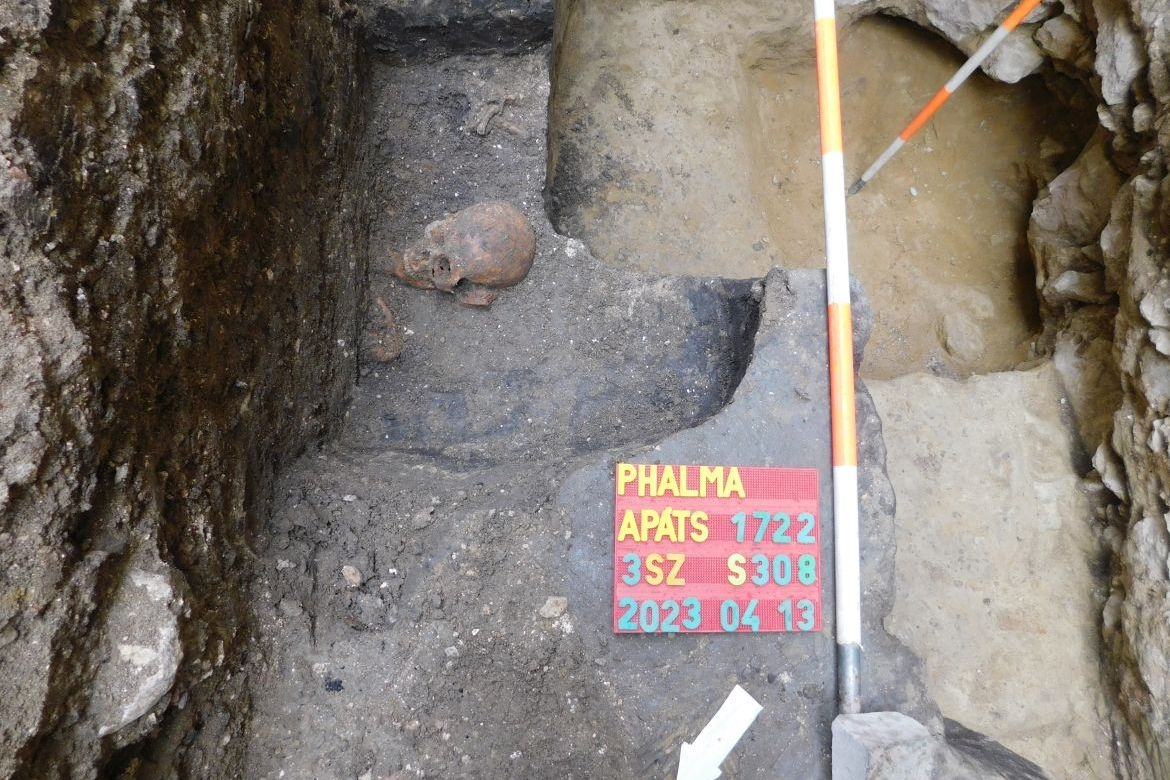 The entombment found in the lowest stratum
The entombment found in the lowest stratum
As part of the project, the planned excavation began in the spring of 2023 at the territory of Pannonhalma Archabbey, led by Ágoston Takács, a doctoral candidate from the Department of Archaeology at Eötvös Loránd University (ELTE). The excavations, which took place in March and April, were carried out with the assistance of the abbey authorities and the approval of the monastic community. The preliminary geophysical survey for archaeological purposes was conducted by experts from the National Archaeological Institute of the Hungarian National Museum, and a LIDAR survey of the abbey and its immediate surroundings was also conducted.
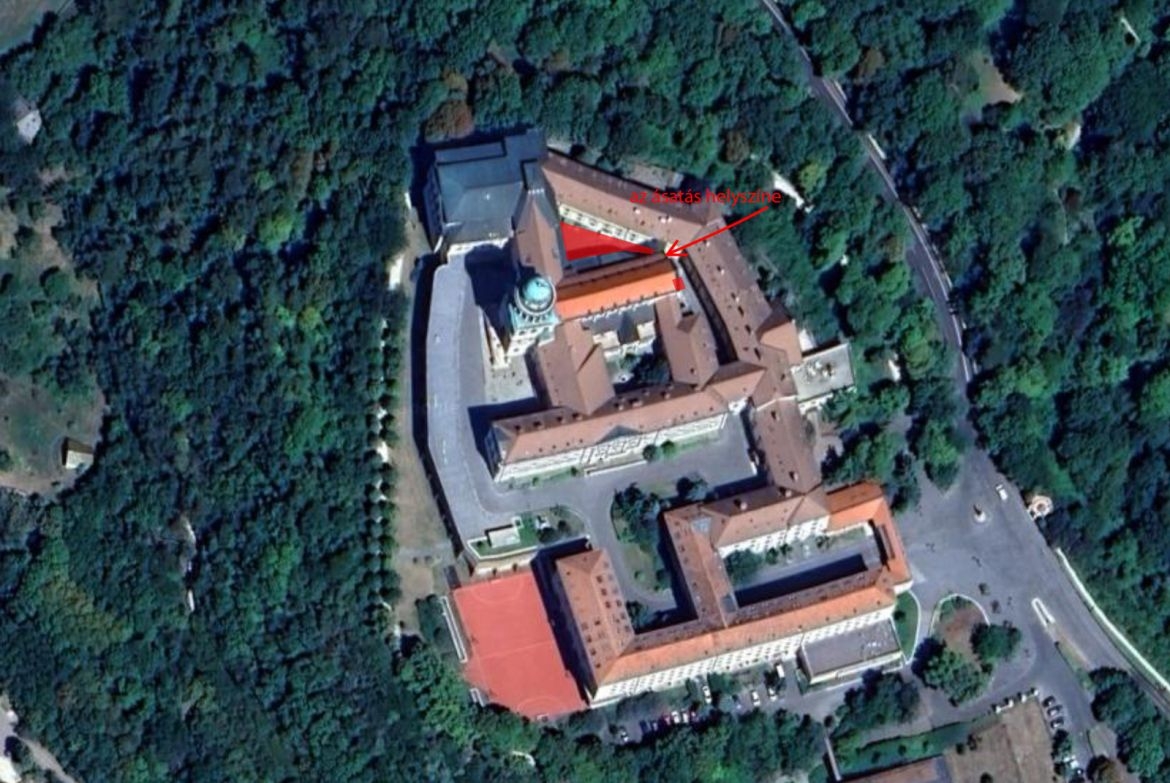 The excavation area situated within the premises of the abbey complex
The excavation area situated within the premises of the abbey complex
From the very beginning it was evident that Pannonhalma is far from being an ordinary archaeological site. It is a rarity in Hungary to find a monument complex that has been continuously used for nearly a millennium. Consequently, in the excavation area, specifically the courtyard located to the north of the abbey church, there were limited locations where a consistent stratigraphic sequence spanning even the last thousand years could be identified. This can be attributed, in part, to the sandy surface of the hill being relatively close to the current ground level and, furthermore, to the significant construction activities carried out here from the late Middle Ages to the present that have not left the area untouched.
Although based on previous research one could assume that the northern courtyard functioned partly as a monastic cemetery, archaeologists found relatively few graves in this area, mostly concentrated in the eastern part. Near the Our Lady Chapel, which opens from the northern side aisle, two heavily disturbed graves were discovered in a stratum, covered by debris-filled, mixed soil. Based on the scattered bones found at the site, it can be concluded that there was indeed a populous cemetery located here, which was disturbed even during the Ottoman period. Evidence of this is the massive, approximately 1.5-meter-wide wall, likely reinforced with timber framing, which divided the already narrow courtyard. The eastern part of the wall likely connected to the northern side aisle of the church, while in the western direction, it was cut off by a presumably Baroque vault, making it impossible to trace further in that direction. Since the fortress wall was located further out on the edge of the hilltop, it can be interpreted as an internal fortification of the church. On the outer side, the charred surface possibly indicates one of the fires during the Ottoman period.
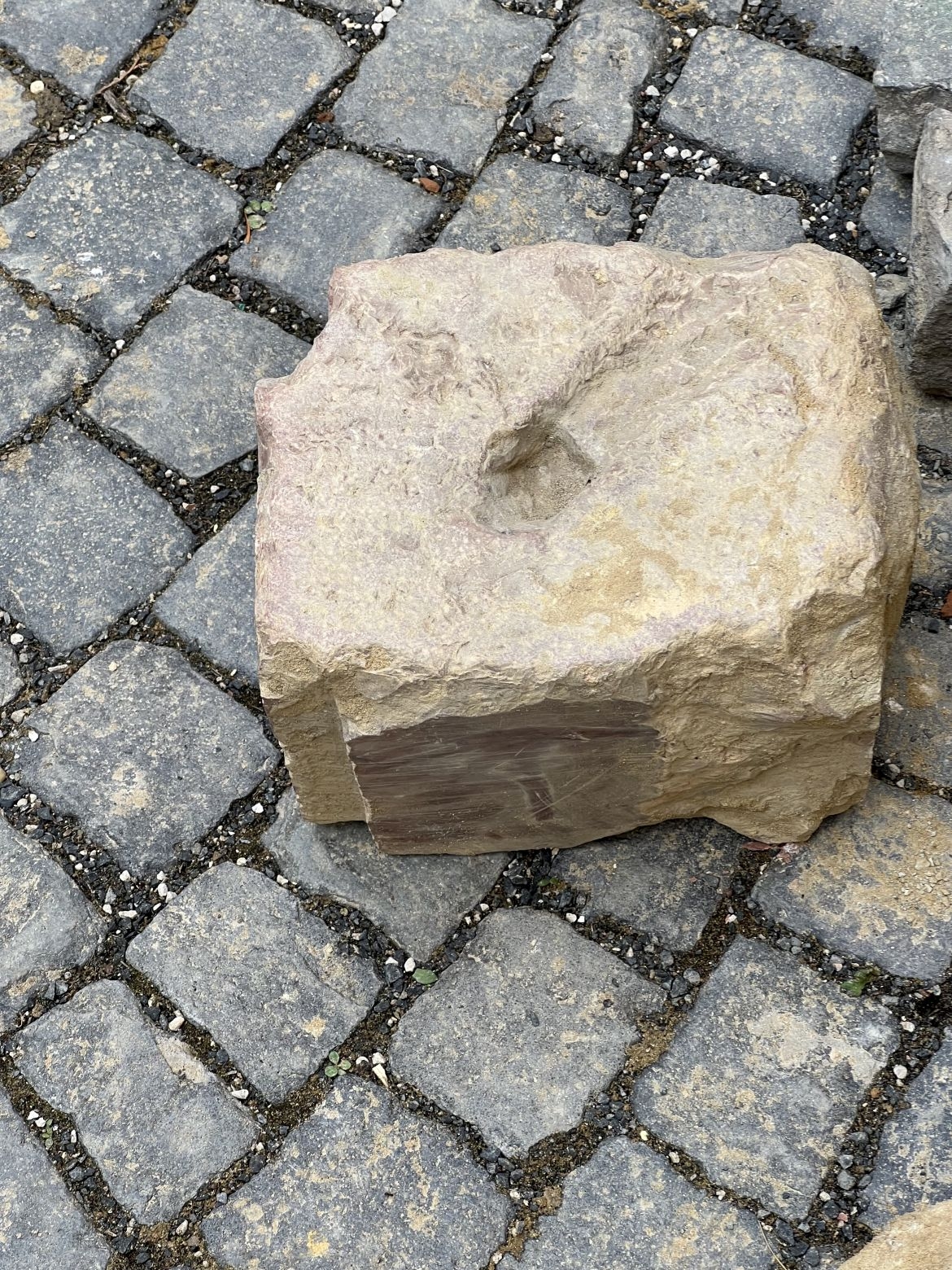 Medieval red marble carving from the excavation, originally may have belonged to the church
Medieval red marble carving from the excavation, originally may have belonged to the church
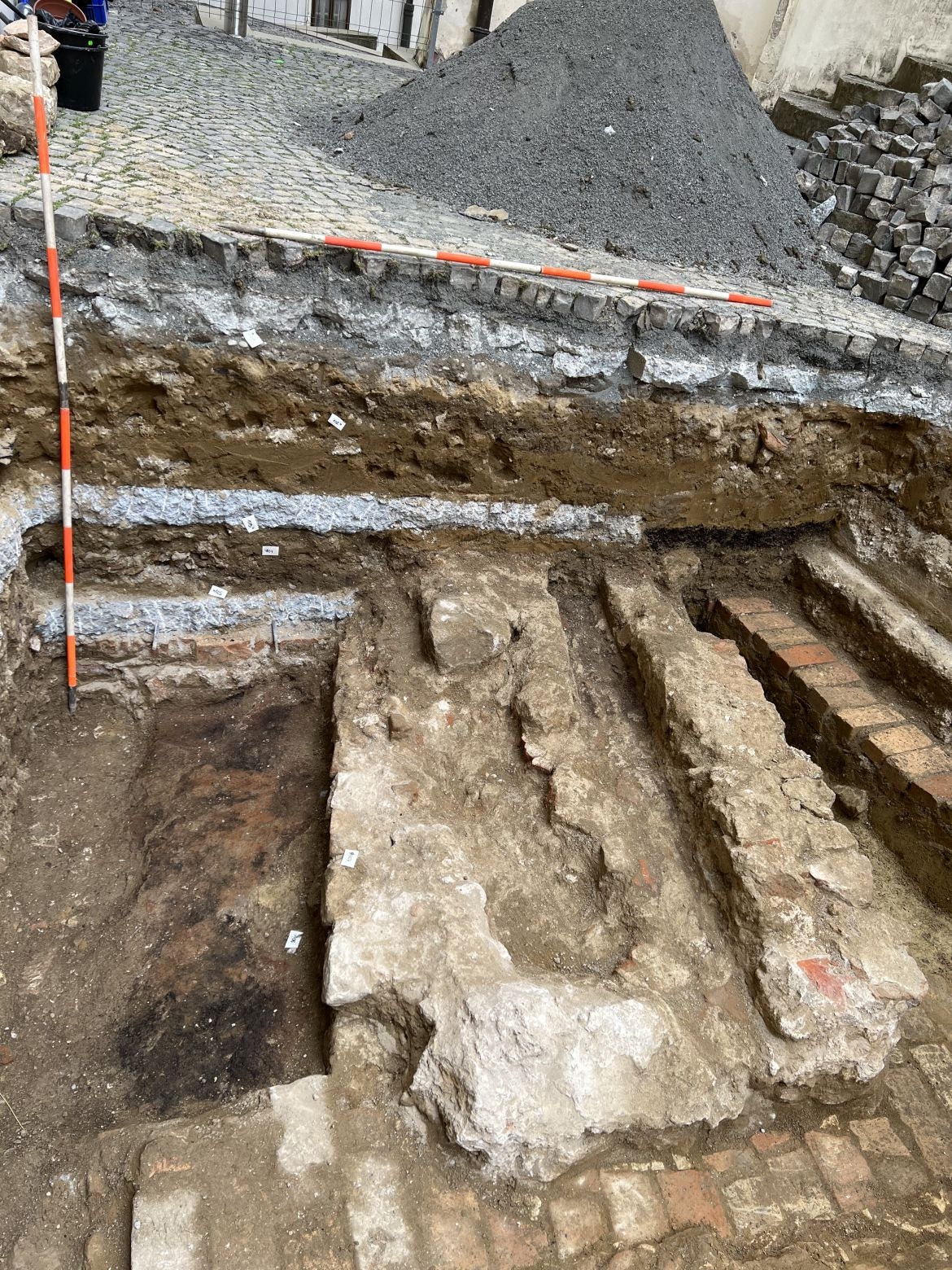 The Ottoman-era wall and the burnt flooring surface
The Ottoman-era wall and the burnt flooring surface
The most well-preserved graves were found in the eastern side of the sanctuary. Within a relatively small sondage, archaeologists unearthed three burial remains in two layers. Each burial was oriented towards the east, aligning with the sanctuary wall, indicating that they postdate the construction of the present-day sanctuary in the 13th century. The archaeologists conducted excavations down to the foundation of the sanctuary, searching for any signs of separation or remnants of earlier periods. However, the foundation appeared consistent, and no evidence of earlier 11th-12th century sanctuary foundations was found in the investigated area.
 The foundation of the sanctuary
The foundation of the sanctuary
A final excavation trench was opened in the basement area of the wing situated southwest of the basilica, currently serving as a mechanical room. The objective was to locate the potential counterpart of the sizable foundation wall, which was interpreted as the base of a tower and found northwest of the church. Regrettably, the excavation revealed that this particular area had undergone more extensive disturbances compared to the northern section. As a result, only remnants of Baroque-era and subsequent constructions were identified, and no traces of foundations were uncovered.
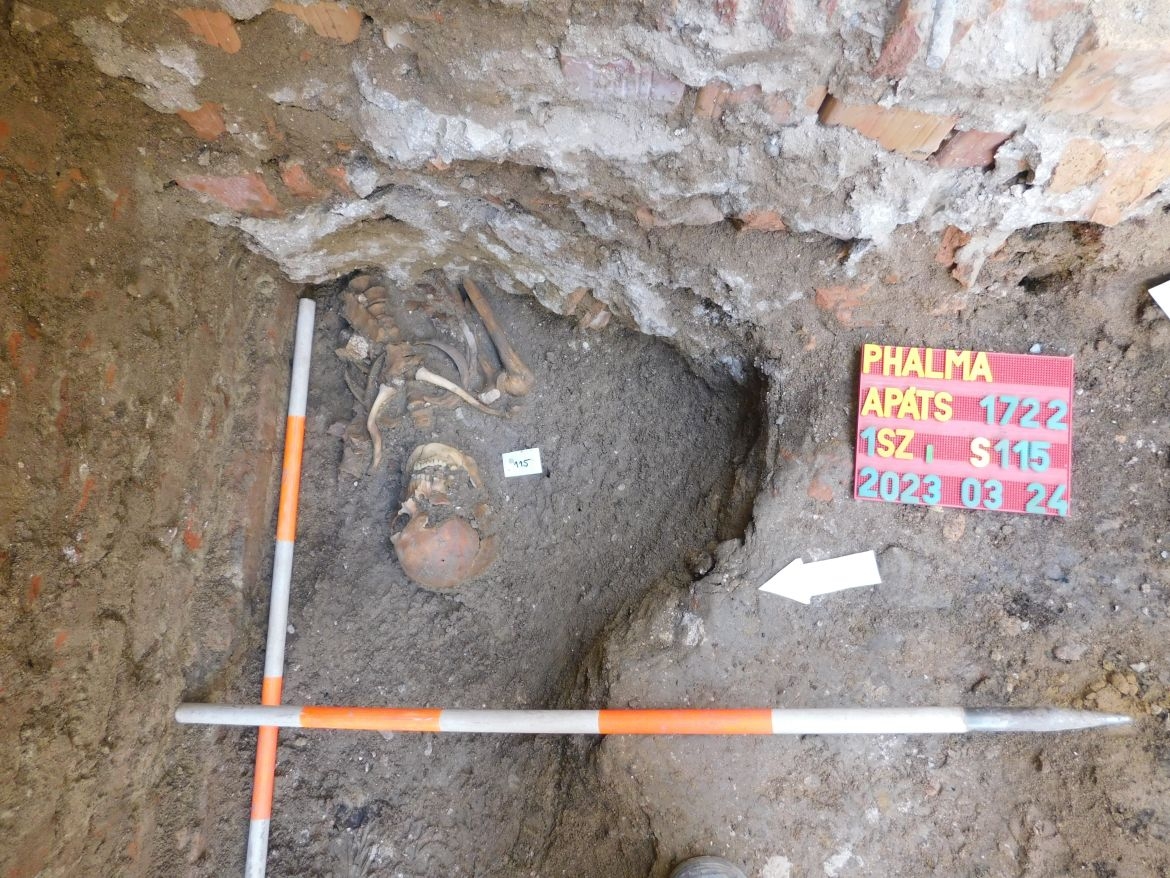 A disturbed grave affected by the Baroque monastery building
A disturbed grave affected by the Baroque monastery building
 Graves disturbed by previous excavations on the eastern side of the church sanctuary
Graves disturbed by previous excavations on the eastern side of the church sanctuary
The professional works have been completed, and currently, the restoration of the pavement is underway. The abbey authorities provided great assistance in the planning, logistics, and on-site work. This support was particularly crucial as it was necessary to maintain the monastery's accessibility for tourism purposes alongside the extensive demolition work carried out in the confined space.
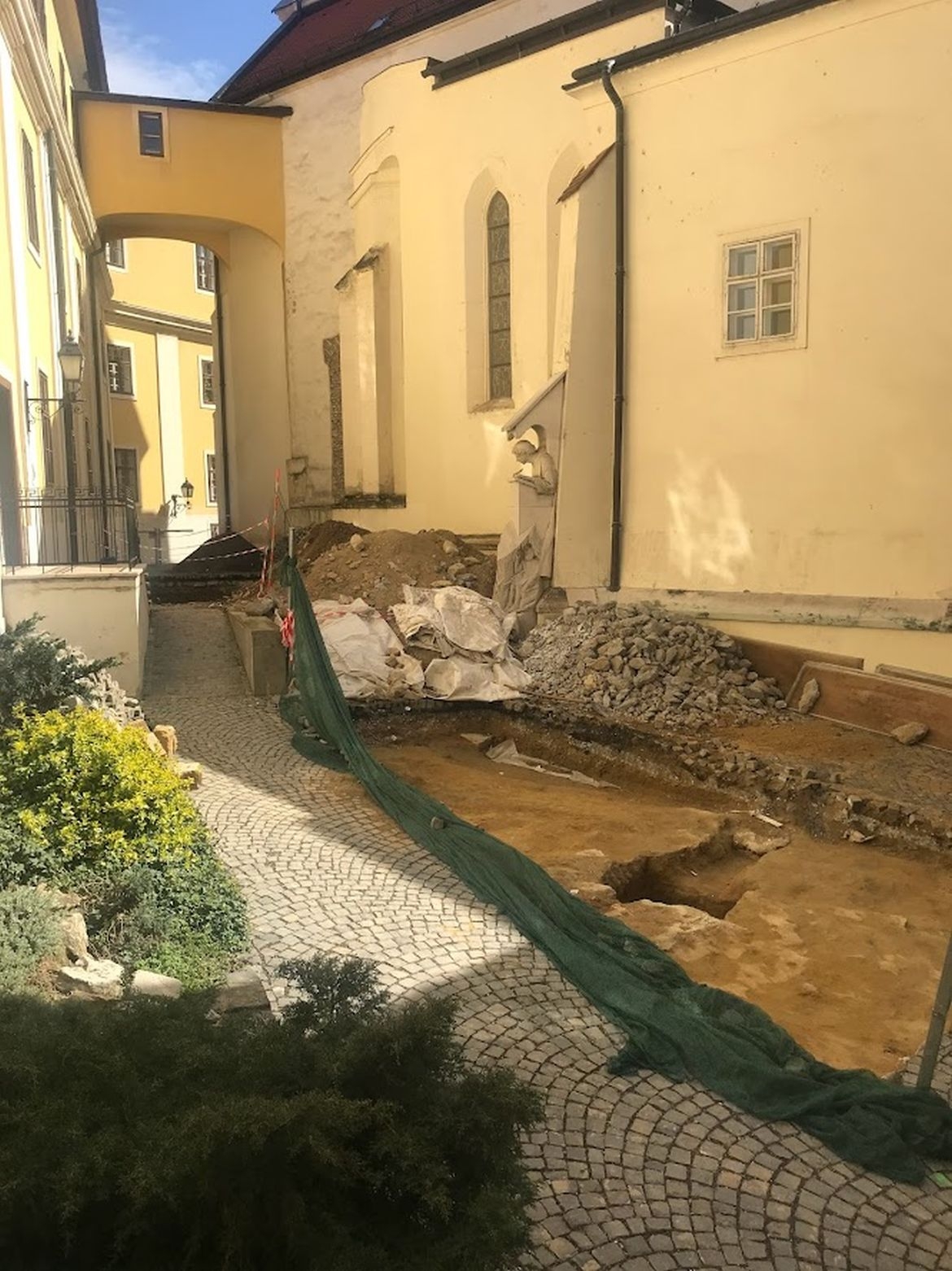 The exposed area of the northern part of the courtyard
The exposed area of the northern part of the courtyard
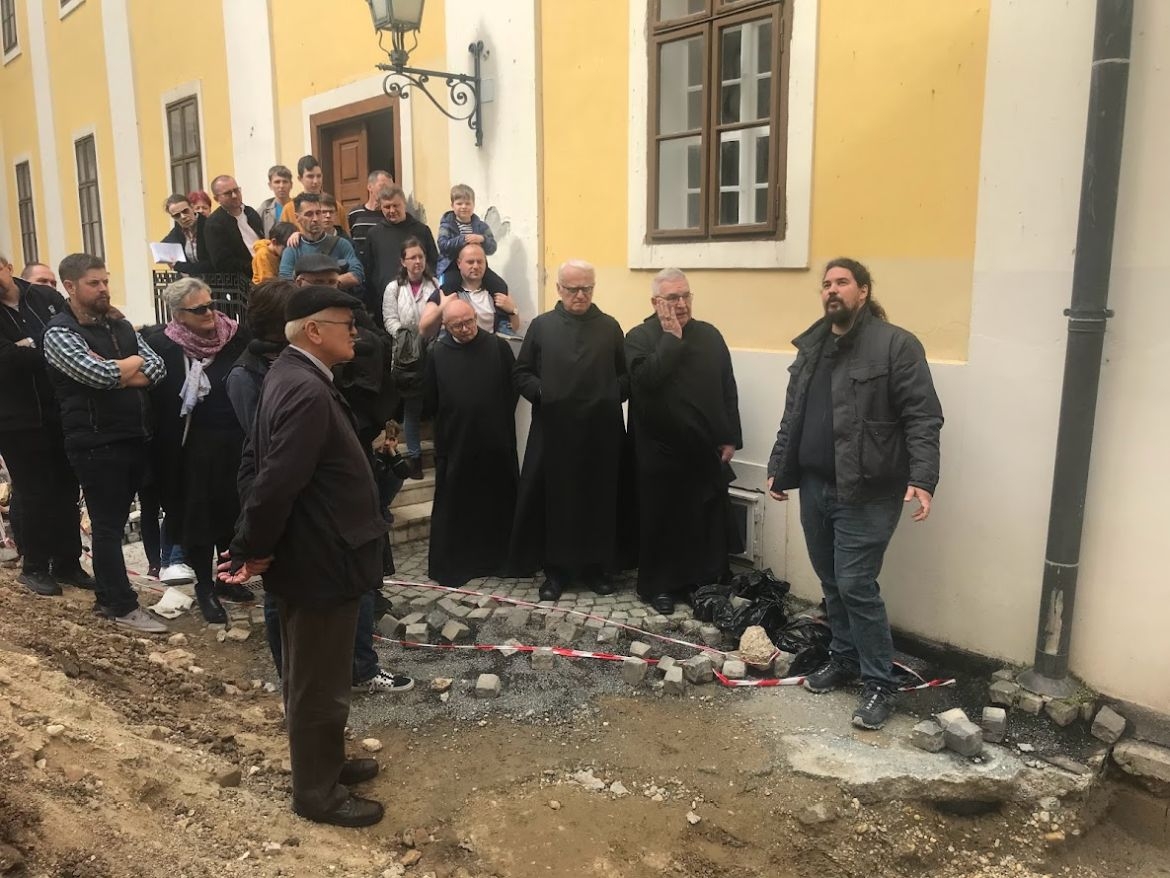 Archaeological guided tour offered to Benedictine monks and visitors
Archaeological guided tour offered to Benedictine monks and visitors
The research conducted in a small and heavily disturbed area revealed that the architectural history of the monastery still holds many unknown details and surprises for the experts and the active Benedictine community. Exploring these will further refine the history of the country's oldest functioning abbey.
After completing their work in Pannonhalma, the experts involved in the project focused on researching early royal-founded monasteries will return to the Saint Maurice Monastery in Bakonybél for a brief period.

